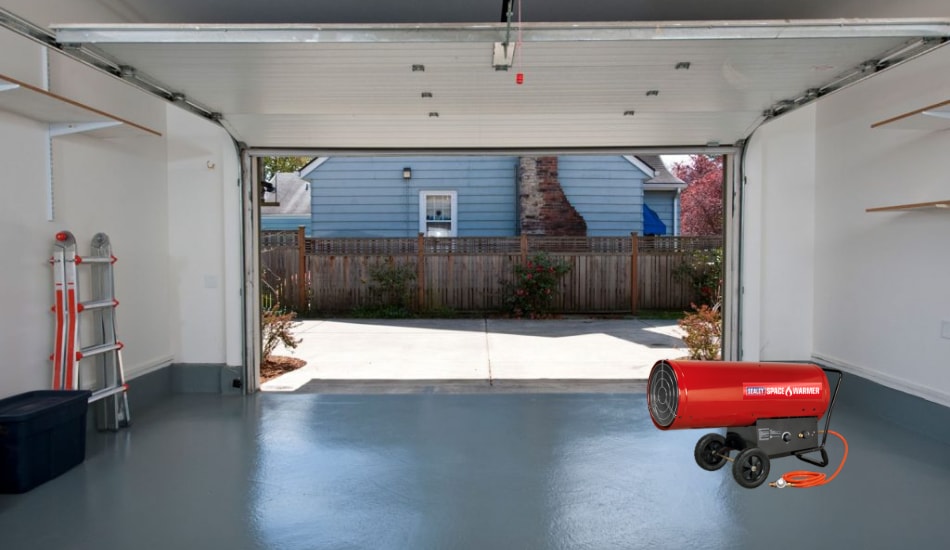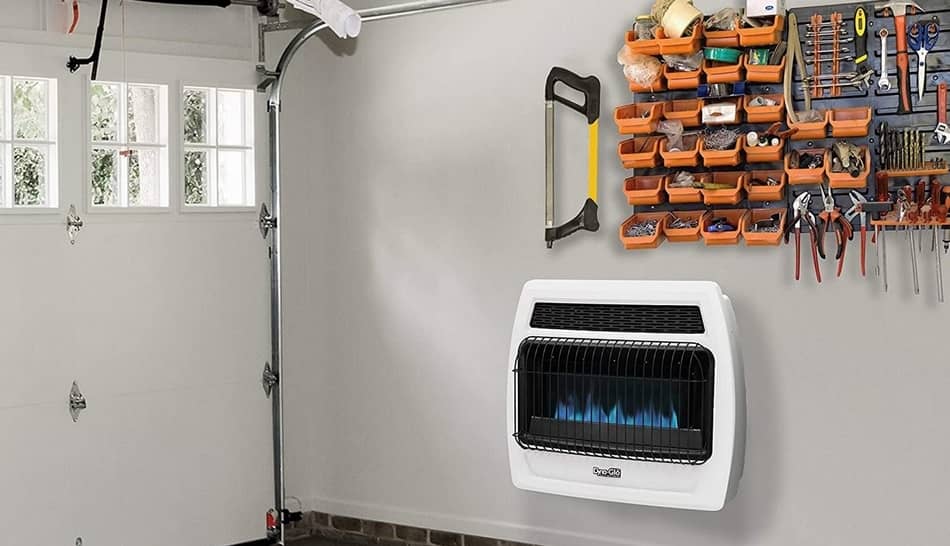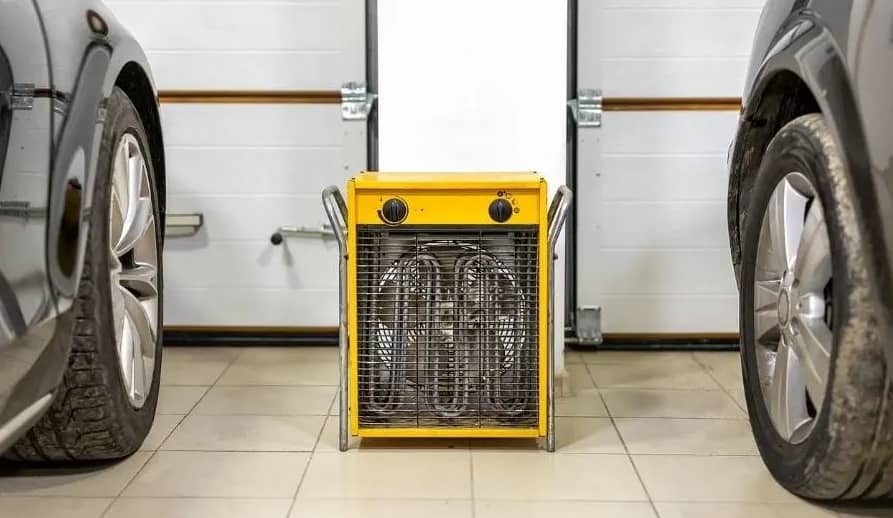Is It Safe to Use a Propane Heater In a Garage? Explained

If you are looking for a way to keep your garage warm during cold days, a propane heater is certainly one of the options you should consider. They can easily heat any large room, even a garage. However, propane is very dangerous, so the question is, should it be used in closed spaces such as a garage? In this article, we’ll explain are propane heaters safe and what you need to look for when choosing one. So, let’s start!
Is it Safe to Use a Propane Heater In a Garage? Propane heaters can be used in a garage as long as they have an oxygen depletion sensor (ODS) that automatically turns off the heater when the level of oxygen in the room is too low. The garage also needs to be properly ventilated in case of emergencies.
Although a propane heater is an excellent way to heat a garage, it is necessary to place it in the appropriate place in the garage. The recommended places for this are next to the front door, window, or exit. It is also necessary that there is some kind of air circulation. Below we will look at some more important details that you must take into account when you are using a propane heater in your garage.
Are Propane Heaters Safe in Garages?

Propane heaters are safe and can be used in garages and other indoor places. However, you need to follow guidelines for safe use. When using a propane heater, you must pay attention to the fact that there are no easily flammable materials such as curtains or bedding near the heater. Also, carbon monoxide is very dangerous and can lead to death if there is too much of it in a closed space. Because of that, it’s good to have carbon monoxide sensors installed in your garage.
By using a propane heater, you can easily work on your car in the garage and on other projects without too much stress. Besides garages, these heaters can be used in small homes as well. Therefore, using propane heaters in closed places like garages is pretty safe as long as you follow safety precautions.
What Is Carbon Monoxide And Why It Is Dangerous?
When the propane heater is working, it burns propane, and this process creates carbon monoxide. Its danger lies in the fact that it has no smell or taste, and it is invisible. Of course, it takes a large amount to endanger a person’s health seriously. For this reason, sensors are most often installed to detect this dangerous gas and thus warn you in time that there are large amounts of carbon monoxide in the room.
When you are using your propane heater outdoors, then you don’t need to worry. However, it’s a different story when they are used in closed spaces like homes or a garage. Because of that, many propane heaters come with an oxygen depletion sensor (ODS). It’s designed to automatically turn off the heater when it detects higher levels of carbon monoxide.
For those who want to learn more about home garages, be sure to read Can You Put Solar Panels on a Garage Roof?
How to Make a Propane Heater Safe in Garage?

Now that we’ve explained some basics about propane heaters and how dangerous they can be if they’re not handled properly, it’s time to give you some tips on how to make them safe. So let’s get started:
1. Use Propane Heaters That Are Made for Garages
When you are looking for a propane heater for your garage, make sure to check whether it is intended for indoor use. If it is, check to see if it has sensors that will activate when carbon monoxide levels are high. That’s the first and most basic thing you need to look at.
2. Choose Propane Heater That Fits Your Garage
There are many different models of propane heaters on the market, which vary in size, so you need to choose the one that best fits your garage. That way you will efficiently heat your garage and save money in the process. If you have a too-small propane heater, it will be very difficult to heat it. The unit of measurement used for propane heaters is BTU (British Thermal Unit). For example, a garage that is around 500 sq ft will require a heater of around 30,000 BTUs/hour.
3. Safety (Oxygen) Sensors Must Be Installed
Although many propane heaters come with low oxygen sensors, it is necessary to pay attention that your model also has it. This will ensure that if the oxygen level in the room is too low, your device will be turned off in time. Of course, it would be preferable if your device has more additional safety features besides this one.
4. Must Have Overheating Protection Feature
Another thing you should pay attention to when buying a propane heater is the overheat protection system. This is because of safety reasons. We all know what overheating of the device can cause. Almost all systems used for such purposes have this feature.
5. Heater Position
The position in which you will place your propane heater is also important, regardless of whether your device has an ODS safety feature. It is recommended that the heater be placed on a flat surface away from flammable materials such as clothes and curtains. Also, never put objects on the propane heater itself! If it is a wall propane heater, install it near the window.
6. Always Be Present While Propane Heater Is Working
Many people have a habit of leaving sensitive devices on while they are not present in the room. This can be very dangerous if it is a device such as a propane heater. Regardless of whether you leave your garage for a short period or longer, always make sure that you turn off your device. This will prevent potential accidents that may occur.
For those who want to learn more about them, be sure to watch this video.
Difference Between Vent-Free And Vented Propane Heaters
There are two types of indoor propane heaters that you can buy; vent-free and vented models. Vent-free models work on the principle that the burned propane is returned to the room, while the vented propane heater is connected to the vent and removes carbon monoxide from the room.
However, space heaters are designed to be portable, and because of that most of them are vent-free. Almost all models come with an oxygen depletion sensor. Therefore, if you want to buy one for your garage, feel free to opt for the vent-free model.
Quick Safety Tips:
- Make sure that the propane heater is not near the children or pets.
- Maintain your propane heater regularly (at least once a year).
- Never leave your propane heater while you are not in the room.
- Turn off your heater if you notice a yellow or orange flame.
- Heater must-have safety features installed to detect low oxygen levels in the room.
- Never place objects on the propane heater, as it is dangerous.
If you have a wood stove that you want to install in a garage, read How To Install A Wood Stove In A Garage?
FAQ: People Also Ask
How Long Can You Run a Propane Heater in a Garage?
This depends on the size of your garage and the propane heater itself. For a 20-pound propane tank to heat a 1,000 sq ft garage, you’ll need around 10 hours. Each gallon of propane is around 91,502 BTUs.
How much ventilation is required for the propane heater to run safely?
Ventilation that is required to vent a closed garage depends on its size and the amount of propane that burns. It’s important to ensure that there is always enough fresh air in circulation to purify carbon monoxide from the room.
Final Thoughts
A propane heater is a device that can heat your garage very quickly and efficiently. However, you should always make sure that you use it properly for safety reasons. When buying, it’s important to pay attention that your model has safety features so that you do not put yourself in danger. Also, try to ventilate your garage from time to time to have fresh air circulation. I hope you have learned about propane heaters and how to use them properly in your garage.
